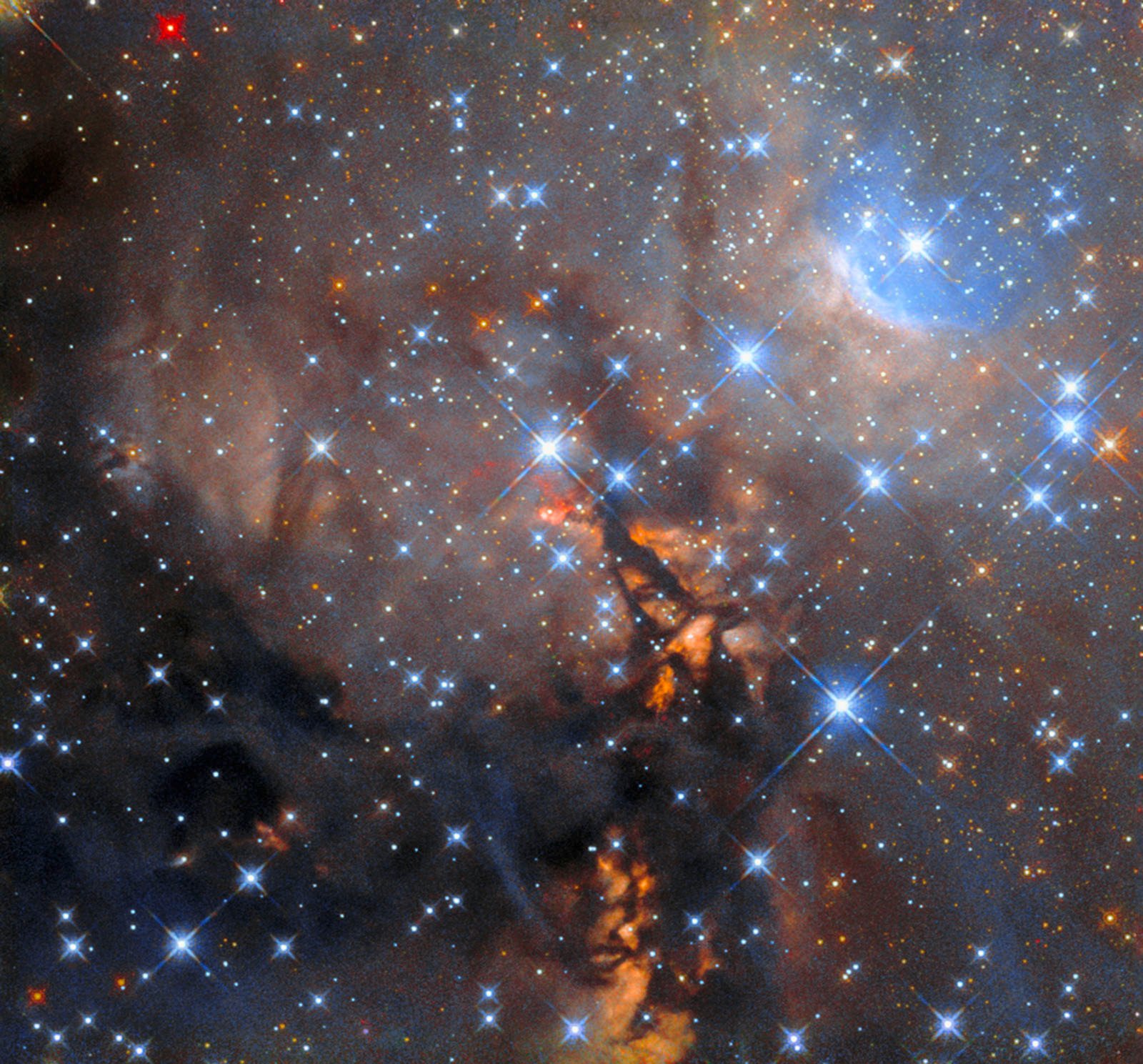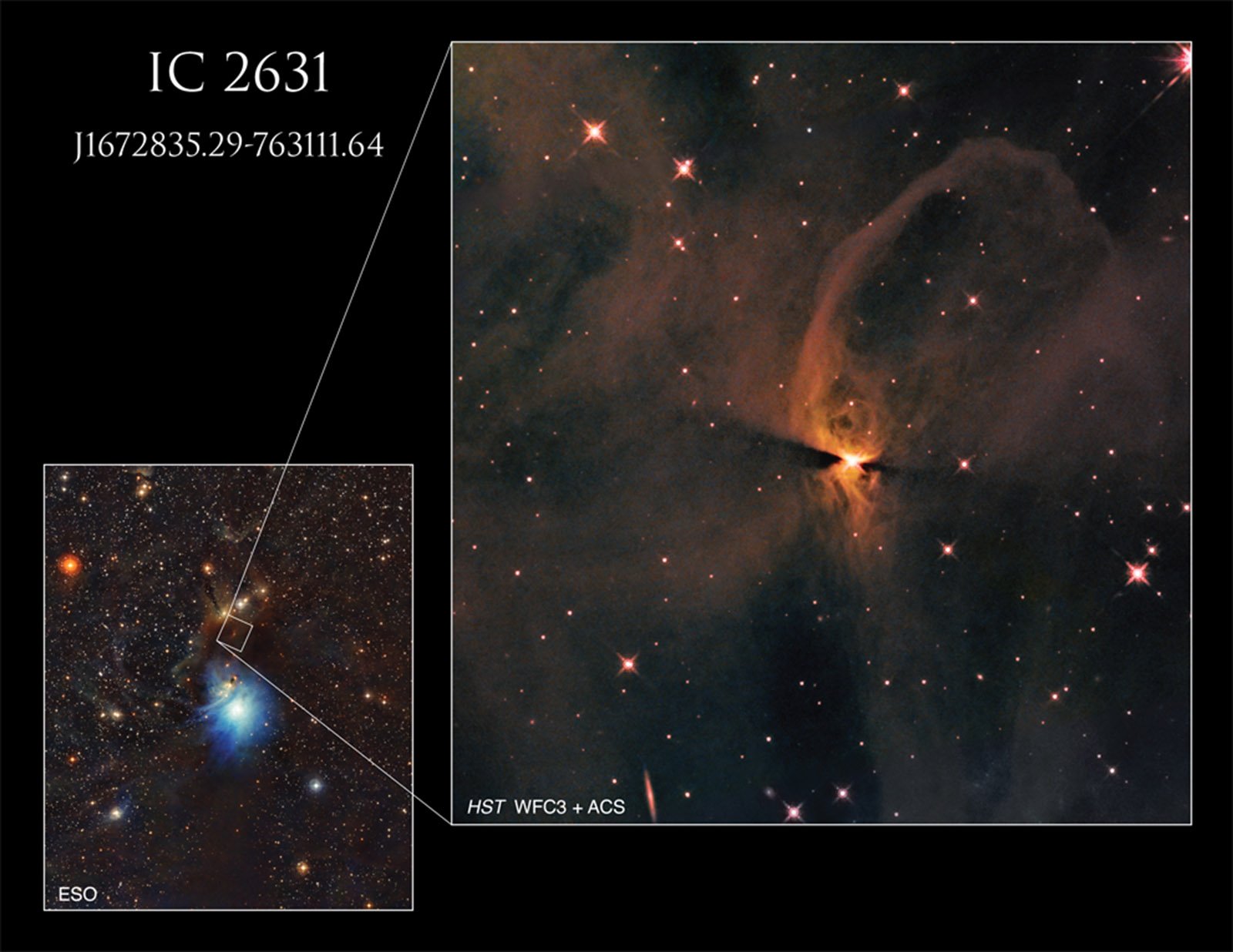Hubble Spies a Baby Star 20 Times More Massive Than the Sun

While the James Webb Space Telescope may get the lion’s share of the attention these days, the venerable Hubble Space Telescope is still performing vital science and capturing beautiful images.
As seen on Space.com, Hubble’s latest subject is the protostellar object OH 339.88-1.26.
“Stars are born from clouds of gas and dust that collapse under their gravitational attraction. As the cloud collapses, a dense, hot core forms and begins gathering dust and gas, creating an object called a ‘protostar,'” NASA explains in a 2021 news release for a different Hubble image.
“The dark vertical streak at the center of this image hides OH 339.88-1.26, which is an astrophysical maser,” writes the European Space Agency (ESA) in a news release. Maser is an acronym, much like “laser,” for microwave amplification by stimulated emission of radiation. A maser is “a laser that produces coherent light at microwave wavelengths,” explains ESA.
Masers occur naturally in various astrophysical conditions, including at Jupiter’s north pole and in star-forming regions like the one Hubble has imaged.
Astronomers used Hubble’s Wide Field Camera 3 to investigate OH 339.88-1.26. The object is about 8,900 light-years from Earth and is located in the constellation Ara. Scientists are looking at the object as part of a more extensive set of Hubble observations investigating “the hearts of regions where massive stars are born to constrain the nature of massive protostars and test theories of their formation.”
Tucked within the dust in the center of the latest image is the massive protostar G339.88-1.26. This very young star, which is still gathering mass from its parent molecular cloud, is already estimated to be about 20 times the mass of the Sun.
Alongside state-of-the-art terrestrial observatories like the Atacama Large Millimeter/submillimeter Array (ALMA) in the Chilean Andes and the Stratospheric Observatory for Infrared Astronomy (SOFIA), Hubble’s protostar investigation comprises close looks at five intermediate-mass protostars using infrared wavelength imaging.
That is right. Despite being 20 times more massive than the Sun, the baby star G339.99-1.26 is not an especially massive protostar. Consider the protostar G45.47+0.05. It is 30 to 50 times more massive than the Sun and shows evidence of further growth.

The Hubble Space Telescope has imaged many protostars during its mission lifetime. In 2021, Hubble captured the protostar J1672835.29-763111.64 in the reflection nebula IC 2631. As part of the Chamaeleon star-forming region in the Chamaeleon constellation, the protostar was one of 312 protostars that Hubble targeted as part of a survey to investigate protostars that had previously been identified using the Spitzer and Herschel infrared space observatories.
Protostars are primarily visible using infrared light because the young, growing stars emit considerable heat energy. Their visible light is shrouded by the dust that surrounds and feeds them. Sometimes, the dust that remains after a star fully forms becomes asteroids, comets, or even planets.